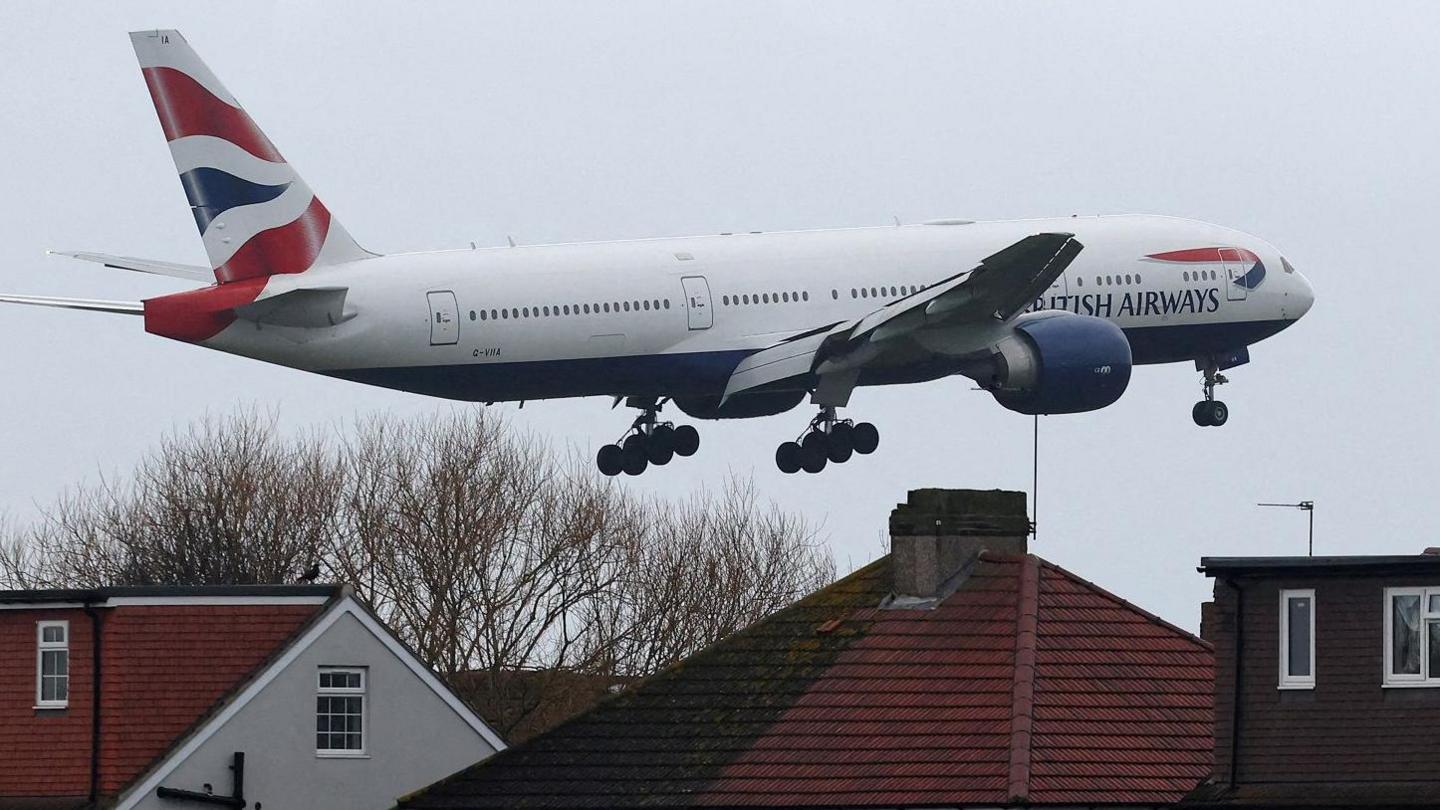Quicker flights promised in flight path shake-up

- Published
Plans to fast-track the remodelling of the UK's flight paths could lead to shorter journey times, fewer delays, and more flights for passengers, the government says.
The transport department said the UK Airspace Design Service (UKADS) will re-design the routes planes must take over UK airspace - many of which were decided around 70 years ago.
The initial shake-up will focus on the complex airspace in and around London, although any changes are not expected to come into effect for some years.
However, environmental group Friends of the Earth said redesigning flight paths would "expose even more communities to noise and air pollution".
Ministers say the plans could allow planes to climb quicker during take off and descend more smoothly.
Helping to reduce aviation's climate change impacts and pave the way for new technologies such as flying taxis is another goal of the planned changes.
"Modernising our airspace is also one of the simplest ways to help reduce pollution from flying and will set the industry up for a long-term, sustainable future," said Aviation Minister Mike Kane.
The changes would be the largest to UK airspace since it was first designed in the 1950s, at which time there were only around 200,000 flights a year. Last year, there were about 2.7 million flights in UK airspace.
Tim Keevil from Basingstoke, who travels abroad 10 to 12 times a year, says Heathrow should have been expanded 30 years ago.
He told the BBC the airport is "undersized and understaffed" and a "national embarrassment".
But Dr Alan Lafferty has lived in his Chiswick home for 43 years and says planes landing at Heathrow are already noisy enough. He fears that new flight paths will make the situation worse for him and his wife.
"Planes landing at Heathrow already fly close enough to hear them drown everything out. Any closer would be a nightmare," he told the BBC.
Heathrow Airport sees busiest April on record
- Published12 May
What's the plan for a third runway at Heathrow Airport?
- Published30 January
The government says UKADS will be fully operational by the end of this year.
Changes to the airspace over London are not expected until the 2030s, and could be delivered in stages given the scale and complexity.
Some changes to routes outside London could be seen before 2030.
Tim Alderslade, the head of trade body Airlines UK, said the changes to UK airspace were "long overdue".
"We look forward to working with ministers and all parts of UK aviation to complete a once in a generation infrastructure programme as quickly as possible and ideally by the end of the decade," he added.
Steve Heapy, chief executive of Jet2 called the announcement "excellent news" and called for "swift action".
"We have been calling for the modernisation of airspace for years, as it has been proven to be a key driver in achieving CO2 reductions," he said.
However, Cagne, an aviation and environment group for Kent, Surrey and Sussex, warned the plans could mean new flight paths over houses that are not currently affected.
Rosie Downes, head of campaigns at environmental group Friends of the Earth, said: "What's needed is fewer flights, not more - and planned expansion at Heathrow and Gatwick, which the government has said it's 'minded to approve', would lead to hundreds more flights every day.
"It's also likely that redesigning flight paths will expose even more communities to noise and air pollution, putting their physical health and wellbeing at risk."
Additional reporting by Alex Emery
Get in touch
Do you live under the proposed new flight paths? Are you a traveller who has been affected by stacking delays?